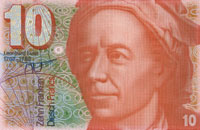History of Sudoku
Long before our era, the still small Magic Square was born in Orient, most probably in China.
 |
A Magic Square is a grid filled with prime numbers so that their sum by row,
column and diagonals are equal.
During the 9th century a Magic Square of order 8 (8 x 8 square) was achieved in Persia.
This Magic Square can be compared to the chess board (8 x 8 as well), which had appeared in this region little before.
It then spread to the Arab world, then to Europe around the 15th century.
It is worth mentioning Albrecht Durer's " Melencholia " print (1514), probably the first representation of the Magic Square in the Western world.
Illustration: Melencholia, Albrecht Durer, 1514
Move your mouse over the picture to magnify the magic square.
|
It is then of no interest but to mathematicians, who consider it a curiosity.
Blaise Pascal writes an essay on magic squares in 1654.
A Swiss mathematician, Leonhardt Euler, invented a variant, the Latin Square,
where prime numbers play no role, no more than sums of columns, rows and diagonals.
But each number must appear only once in columns, rows and diagonals.
This is the reason why it is often described as the ancestor of sudoku,
despite the fact that it was actually not a game.
Illustration: Old 10 Swiss Francs banknote
Portrait of Leonhardt Euler
|

|
Su doku en japonais :
On doit la véritable explosion du phénomène à l'échelle mondiale à un juge Néo-zélandais retraité, Wayne Gould.
Après avoir remarqué une grille partiellement remplie au Japon, il développe un programme pour produire des sudokus.
Il propose ses grilles à différents journaux et c'est le Times anglais qui lance la publication de sudoku à grande échelle le 12 novembre 2004.
Quelques jours plus tard, c'est le Daily Mail qui publie son sudoku journalier, suivi par le Daily Telegraph qui le présente en première page.
Le Times s'y met rapidement, fort de sa position dominante et publie le premier recueil de grilles de sudoku qui remporte un vif succès.
Depuis, la fièvre du jeu a gagné toute la planète, plus de 200 journaux dans le monde publient des grilles de sudoku et ce nombre grandit de jours en jours.
En lisant ces quelques lignes, vous participez au phénomène et démontrez, si besoin était, son ampleur.
Bonne partie.
|
|
|
copyright © 2006 by Duo Kus
|
|
